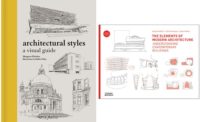The National Weather Service suggests that the 130 degrees Farhrenheit measured in Death Valley on August 16 ranks as the highest temperature ever reliably recorded. Evidence of our environmental crisis surfaces daily, an inconvenience that the architecture profession has largely avoided addressing, and even abetted, through enormous expenditures of energy in buildings.
Architecture’s past could be a key to a more climate-friendly future, which is the case the architectural historian Daniel A. Barber makes in his new book. Barber is not the first historian to note the sustainable design predilections of modern architects in the decades bookending the Second World War, but his book offers perhaps the most comprehensive and concise corrective to the reigning histories of Modernism that have tended to exclude, or at least consider only superficially, environmental context.
Barber makes a detailed study of the building envelope in early Modernism, situating it as both a mediating device and a cultural production, always in the service of a resultant and useful “planetary interior.” Among his “climatic modernists” is Le Corbusier, the great innovator of the brise soleil, and so the author begins with an elegant description of the architect’s unbuilt 1931 project for Barcelona, Lotissement. An apartment block with multiple louvered and dynamic facade expressions, it’s the sort of porous, performative, naturally ventilated project that today would win an AIA COTE award for its innovation, which tells you how little the profession has advanced in response to the climate crisis.
The Corbu example acts as a soft opening for a book that takes some unexpected turns. Barber concludes the first half, which considers the global development of the modern movement, with an analysis of early Brazilian Modernism centered on the intensely articulated facades by the firm MMM Roberto in Rio de Janeiro, followed by an examination of the way Richard Neutra’s work in Los Angeles and on behalf of the U.S. government exported concepts of climatic modernism around the world. These case studies illustrate an architectural agenda that situates the expression of the facade as an integration of cultural, political, scientific, and design forces to advance emerging research and a global economy. It’s a neat trick to suggest that new computational models and diagrams, such as the sun-path diagram, express climatic risk and political power through the integration of shading systems and other facade technologies, but Barber does it.
The second half of the book is for true aficionados, especially if you’ve ever wondered how the magazine House Beautiful and ASHRAE conspired to sell air-conditioning to the insatiable American consumer, or if you find the midcentury development of Victor and Aladar Olgyay’s computational models for a fully integrated, climatic architecture particularly thrilling. Here, the book makes its most compelling argument for a reset and a return to climatic modernism’s original aims after an era of cheap energy and climate-change denial.
We are now faced with an avalanche of new data about climate risk that architecture has been slow to acknowledge, particularly when coupled with race and class divides that have historically limited access to healthy buildings. It’s telling that many of the case studies of early Modernism that Barber selects are social housing, schools, and everyday office buildings.
To date, our response to wildfires, extreme heat, tropical storms, sea-level rise—take your pick—has been reactive, and mostly in terms of engineering. Unlike the architects in Barber’s book, we have armies of specialists, advanced digital fabrication technologies, and terabytes of computational models to inform architecture. Imagining a new “planetary interior,” one divorced from air-conditioning, calls for a reckoning not only for architecture but our entire social and cultural existence. The emptying out of office buildings during the pandemic presents an opportunity to start that revolution, one that architects could be leading again.



